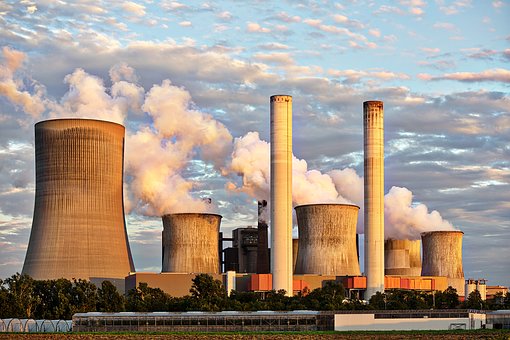The simple act of boiling water is one of humankind’s oldest inventions, and it’s still central to many of today’s technologies, from coffee makers to nuclear power plants. Yet this seemingly simple process has complexities that have long defied full understanding.
Now, researchers at MIT have found a way to analyze one of the thorniest problems facing heat exchangers and other technologies in which boiling water plays a central role — how to predict, and prevent, a dangerous and potentially catastrophic event called a boiling crisis. This is when so many bubbles form on a hot surface that they coalesce into a continuous sheet of vapor that blocks any further heat transfer from the surface to the water.
Such events can cause weakening or melting, so nuclear power plants are designed to operate at levels far below those that could trigger a boiling crisis. This new understanding might allow such power plants to operate safely at higher output levels by reducing the needed operating margins. The new results are presented in the journal Physical Review Letters in a paper by assistant professor of nuclear engineering Matteo Bucci and graduate students Limiao Zhang and Jee Hyun Seong.
“It’s a very complex phenomenon,” Bucci says, and although it has been “studied for over a century, it’s still very controversial.” Even in the 21st century, he says, adding:
“We talk about an energy revolution, a computer revolution, nanoscale transistors, all kinds of great things. Yet, still in this century, and maybe even in the next century, these are all limited by heat transfer.”
Most power plants, regardless of the source, produce power by generating steam
For example, as computer chips get smaller and more powerful, some high-performance processors may require liquid cooling to dissipate heat that can be too intense for ordinary cooling fans. (Some supercomputers, and even some high-end gaming PCs, already use pumped water to cool their chips). Likewise, the power plants that produce most of the world’s electricity, whether they be fossil fuel, solar, or nuclear power plants, mainly produce power by generating steam to turn turbines.
In nuclear power plants, water is heated by the fuel rods, which heat up through nuclear reactions. The spread of heat through the metal surfaces to the water is responsible for transferring energy from the fuel to the generating turbine, but it also is key to preventing the fuel from overheating and potentially leading to a meltdown. In the case of a boiling crisis, forming a layer of vapor separating the liquid from the metal in power plants can prevent the heat from being transferred, leading to rapid overheating.
Because of that risk, regulations require nuclear power plants to operate at heat fluxes that are no more than 75 percent of the level known as the critical heat flux (CHF), which is the level when a boiling crisis could be triggered that could damage critical components. However, since the theoretical foundations of CHF are poorly understood, those levels are estimated very conservatively. It’s possible that those power plants could be operated at higher heat levels, thus producing more power from the same nuclear fuel if the phenomenon is understood with greater certainty, Bucci says.

A better understanding of boiling and the CHF is “such a difficult problem because it is very nonlinear,” and small changes in materials or surface textures can have significant effects, he says. But now, thanks to better instruments able to capture details of the process in lab experiments, “we have been able to actually measure and chart the phenomenon with the required spatial and temporal resolution” to be able to understand how a boiling crisis gets started in the first place.
It turns out the phenomenon is closely related to the traffic flow in a city, or how an outbreak of disease spreads through a population. Essentially, it’s an issue of the way things clump together. When the number of cars in a city reaches a certain threshold, there is a greater likelihood that they will bunch up in certain places and cause a traffic jam. When carriers of disease enter crowded places like airports or auditoriums, the chances of triggering an epidemic are increased.
The researchers found that the population of bubbles on a heated surface follows a similar pattern; above a specific bubble density, the likelihood goes up that bubbles will crowd together, merge, and form an insulating layer on that surface. Bucci said:
“The boiling crisis is essentially the result of an accumulation of bubbles that merge and coalesce with each other, which leads to failure of the surface.”
Because of the similarities, Bucci says: “We can take inspiration, take the same approach to model boiling as is used to model traffic jams,” and those models have already been well-explored. Based on both experiments and mathematical analysis, Bucci and his co-authors have been able to quantify the phenomenon and arrive at better ways to pinpoint when the onset of such bubble mergers will occur. “We showed that using this paradigm, we can predict when the boiling crisis will occur,” based on the patterns and density of bubbles that are forming.
The nanoscale texture of the surface plays an important role, the analysis shows, and that’s one of several factors that might be used to make adjustments that could raise the CHF, and thus potentially lead to more reliable heat transfer, whether for power plants, liquid cooling for advanced computer chips, or many other processes where heat transfer is a crucial factor. Bucci explained:
“We can use this information not only to predict the boiling crisis, but also to explore solutions, by changing the boiling surface to minimize the interaction between bubbles.
“We’re using this understanding to improve the surface, so we can control and avoid the ‘bubble jam.’”
If this research enables changes that could allow for the safe operation of nuclear power plants at higher heat fluxes — that is, the rate at which they dissipate heat — than currently allowed, the impact could be significant. Bucci added:
“If you can show that by manipulating the surface, you can increase the critical heat flux by 10 to 20 percent, then you increase the power produced by the same amount, on a global scale, by making better use of the fuel and resources that are already there.”
Provided by: David L. Chandler, Massachusetts Institute of Technology [Note: Materials may be edited for content and length.]







